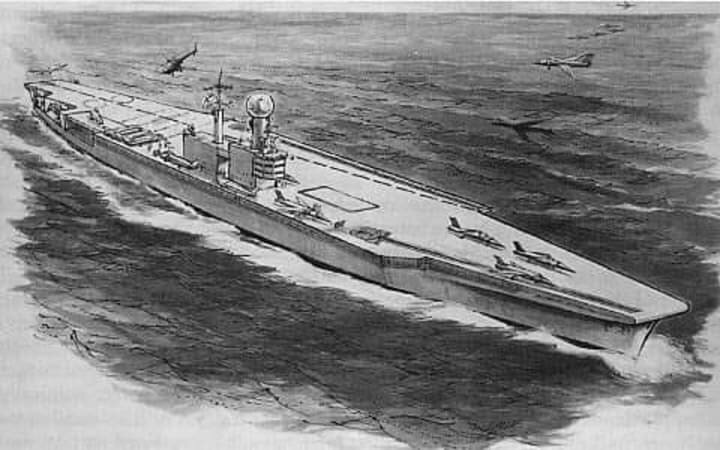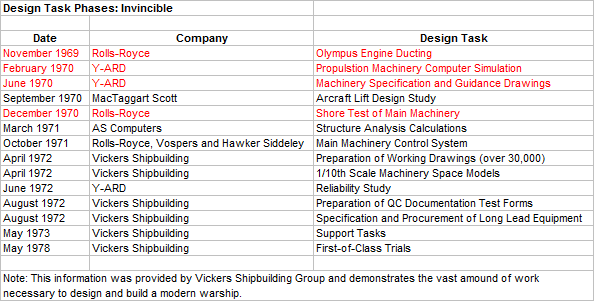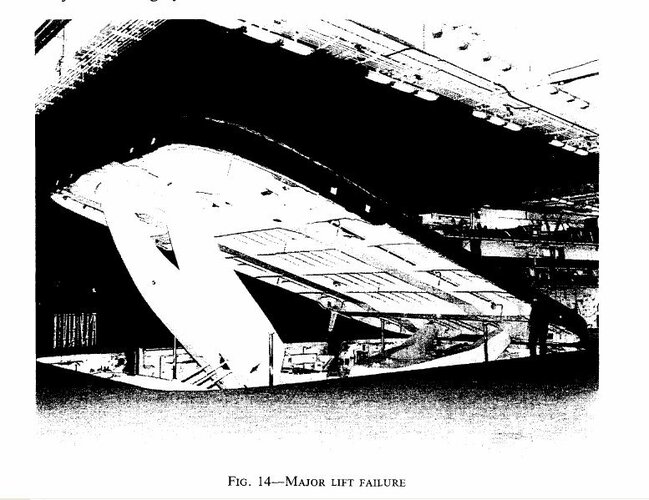- Joined
- 27 September 2006
- Messages
- 6,417
- Reaction score
- 6,815
If the Royal Navy had ordered the CVA01 as planned and it had entered.service in the early 1970s it would have changed the shape of the fleet substantially.
Of the remaining aircraft carriers, only Hermes was modern enough to serve without refit.
It was planned that Eagle would be the other Phantom equipped carrier. But both she and Ark Royal were in poor condition and would probably have been sacrificed to keep CVA01.
Just as Ark Royal served alone from 1972 to 1979 CVA01 would have had to do the same.
Hermes would still have been needed in the Commando role.
Assuming CVA01 had entered service by 1974, the Conservative and Labour governments might have wanted to keep the workforce together and order CVA02 for delivery at the turn of the decade.
A real CVA01 is likely to have lost Seadart and the big Kojak radar, though not necessarily. The Type 82 Bristol might have trialed both systems (the Dutch Tromp entered service at about the same time).
It was intended to build four T82 to escort CVA01. If this had gone ahead, the County class is likely to have been withdrawn faster.
It would still have been necessary to replace the Leanders with suitable ships. But they might have been closer to the Leander than the T21 T22 and T42.
The Tiger class conversions might also have had to be sacrificed to find resources for CVA01. New homes for their Seakings were available on Commando ships, RFA and CVA01.
So by 1981 we have a surface fleet of 1 CVA01 1 Commando ship 4 T82 4 County and a mixture of some 32 frigates. About the same as we actually had but with the escorts less capable than those in otl ( no Exocet, fewer Seadart ships, and a less sophisticated T22 equivalent replacing the Leanders.
CVA01 and Polaris might also have slowed down work on the SSN force.
Of the remaining aircraft carriers, only Hermes was modern enough to serve without refit.
It was planned that Eagle would be the other Phantom equipped carrier. But both she and Ark Royal were in poor condition and would probably have been sacrificed to keep CVA01.
Just as Ark Royal served alone from 1972 to 1979 CVA01 would have had to do the same.
Hermes would still have been needed in the Commando role.
Assuming CVA01 had entered service by 1974, the Conservative and Labour governments might have wanted to keep the workforce together and order CVA02 for delivery at the turn of the decade.
A real CVA01 is likely to have lost Seadart and the big Kojak radar, though not necessarily. The Type 82 Bristol might have trialed both systems (the Dutch Tromp entered service at about the same time).
It was intended to build four T82 to escort CVA01. If this had gone ahead, the County class is likely to have been withdrawn faster.
It would still have been necessary to replace the Leanders with suitable ships. But they might have been closer to the Leander than the T21 T22 and T42.
The Tiger class conversions might also have had to be sacrificed to find resources for CVA01. New homes for their Seakings were available on Commando ships, RFA and CVA01.
So by 1981 we have a surface fleet of 1 CVA01 1 Commando ship 4 T82 4 County and a mixture of some 32 frigates. About the same as we actually had but with the escorts less capable than those in otl ( no Exocet, fewer Seadart ships, and a less sophisticated T22 equivalent replacing the Leanders.
CVA01 and Polaris might also have slowed down work on the SSN force.




